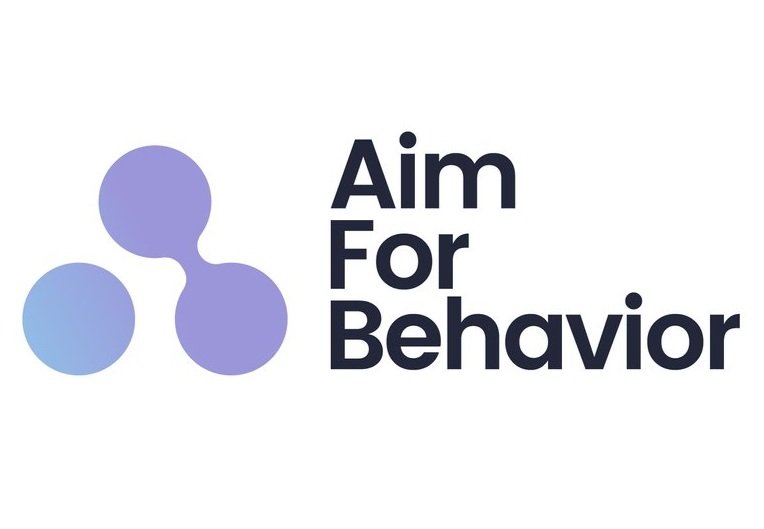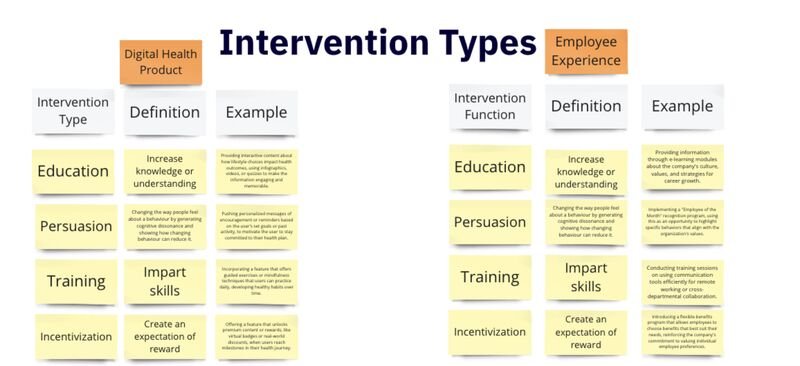Some examples of intervention types and what they are for both employee experience and digital products.
First, let's define Intervention types:
Intervention types are broad categories by which an intervention can change behavior.
We use the term 'intervention types' instead of 'interventions' because one strategy can often do more than one thing to help change behavior.
Here are 2 examples of what these could look like: (not these are generic examples for illustrative purposes)
💡 Digital Health Product:
-Education: Increase knowledge or understanding
>Providing interactive content about how lifestyle choices impact health outcomes, using infographics, videos, or quizzes to make the information engaging and memorable.
-Persuasion: Changing the way people feel about a behaviour by generating cognitive dissonance and showing how changing behaviour can reduce it.
>Pushing personalized messages of encouragement or reminders based on the user's set goals or past activity, to motivate the user to stay committed to their health plan.
-Training: Impart skills
Incorporating a feature that offers guided exercises or mindfulness techniques that users can practice daily, developing healthy habits over time.
-Incentivization: Create an expectation of reward
>Offering a feature that unlocks premium content or rewards, like virtual badges or real-world discounts, when users reach milestones in their health journey.
💡 Employee Experience:
-Education: Increase knowledge or understanding
>Providing information through e-learning modules about the company's culture, values, and strategies for career growth.
-Persuasion: Changing the way people feel about a behaviour by generating cognitive dissonance and showing how changing behaviour can reduce it.
>Implementing an "Employee of the Month" recognition program, using this as an opportunity to highlight specific behaviors that align with the organization's values.
-Training: Impart skills
>Conducting training sessions on using communication tools efficiently for remote working or cross-departmental collaboration.
-Incentivization: Create an expectation of reward
>Introducing a flexible benefits program that allows employees to choose benefits that best suit their needs, reinforcing the company's commitment to valuing individual employee preferences.
These are to be used in conjunction with behavior change techniques, which are the active ingredients in the intervention (I'll write later on an example of what that can look like)
Remember that while these examples seem simple, getting to them by identifying the barriers is very important, because without knowing this you will may end up designing the wrong intervention.

